Most inflatable kayaks are made for river or lake use. In fact, here is a list of the best inflatable kayaks for general use.
But if you want to ride your kayak in ocean waves or explore the coastline and outlying islands, then you need a seaworthy inflatable kayak.
Venturing out onto the ocean (or the sea) means your kayak has to be able to handle the larger waves and changing sea conditions you may encounter.
Let’s have a look at what this means specifically, after which I’ll give you my recommendations on inflatable kayaks for ocean use.
Contents
Features of ocean-ready inflatable kayaks
If you’re heading out onto the ocean, you should make sure your kayak has the following features.
High-pressure air floor for rigidity in waves
To make it through ocean waves, you need a long, rigid kayak. This can be achieved by using a kayak equipped with a drop-stitched high-pressure air floor.

Drop-stitch air floors become as rigid as hard floors made out of aluminum, so they won’t let your kayak fold when going over waves.
Read this article if you want to learn more about the type of floors inflatable watercraft come with.
Self-bailing to drain water
In a self-bailing kayak or boat, the floor has several well-positioned holes to allow any water inside the kayak to drain back out.
Because of this feature, the kayak is considered to be “self-bailing” as opposed to you having to manually bail out the water.
Why do you need the self-bailing feature in an ocean kayak?
Because of the larger waves that can splash a lot of water into your cockpit. With a self-bailing ocean kayak, you:
- Saves you the effort of having to scoop or pump the water out
- Improves the handling and stability of your kayak, since there is no water weight inside holding your kayak back
- Provides more comfort, since you don’t have to sit in water.
Skeg (fin) for control
Skegs (aka fins) are used to assist in the tracking of a kayak, meaning it’s easier to go straight. This becomes important in crosswinds, currents, and waves that you will encounter out on the ocean water.
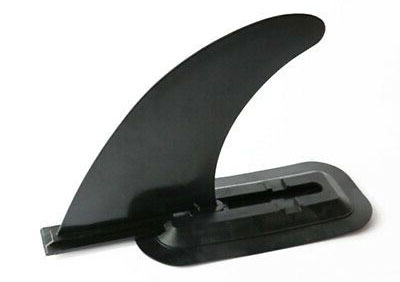
Inflatable kayaks suitable for ocean use will have a larger removable skeg. The better kayaks will even have 2 fins for added control, which is useful especially on longer kayaks.
You attach the fin after you inflate the boat, and detach it when you pack away (or see no need for the skeg).
Here are some tips for using your kayak with a skeg:
- Make sure it is securely locked in place, you don’t want to lose it in the water.
- The kayak hulls and floor need to be inflated to optimal PSI to become rigid. This is how the skeg can truly help with tracking.
- Mind the skeg in shallow water! It is easy to forget that there is something sticking out from the bottom of your boat, bump it into the seabed, and deform or break the skeg.
Go long and wide
It is best to use larger inflatable kayaks when going paddling on the ocean. The reason for this is that the larger the kayak, the more stable it will be in ocean waters.
Longer kayaks do well in ocean waves. You can crash into them head-on without folding. The kayak simply rides on the wave.
Wider kayaks are more stable, which is always nice in rough waters.
Best inflatable kayaks for ocean/sea use
Here is a list of quality inflatable kayaks that tick all the boxes for use in the ocean or sea.
| Kayak | Description | Size & capacity | Details | |
|---|---|---|---|---|
| 1. | 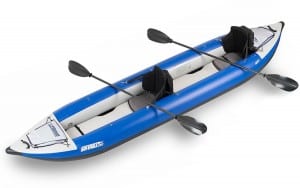 | Best Sea Kayak Sea Eagle Explorer 420x This line of kayaks is also great on open water. Rugged and versatile, with a 3 year warranty. | 14’ x 3’3″ 855 lbs | Details |
| 2. |  | Shorter Sea Eagle Explorer 380x This is a shorter version of the Explorer, equal to it's big brother in every other way. | 12’6″ x 3’3″ 750 lbs | Details |
| 3. | 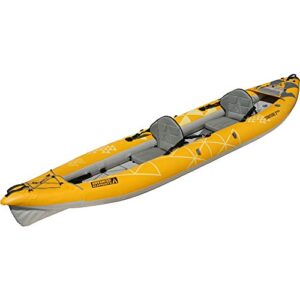 | 2nd Choice AE StraitEdge2 Pro This is my top pick for use on open water. It is durable, cuts through waves, has plenty of features, and just a great ocean/sea kayak. | 13’ x 2’11″ 500 lbs | Details |
| 4. | 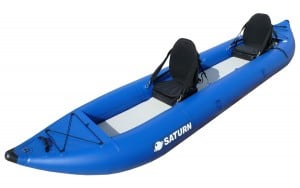 | Saturn Ocean Kayak This is another very capable kayak, but it lacks the whitewater capabilities that the AE and Sea Eagle have. | 13'10" x 3'2″ 900 lbs | Details |
| 5. | 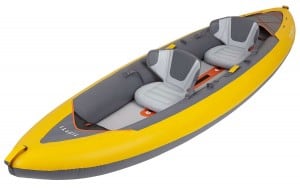 | Budget Pick ITIWIT X100+ This is a good kayak for use on the ocean, but it is not as durable and it's capacity is low. | 12′ x 3’4″ 330 lbs | Details |
Now, let’s have a look at these sea-worthy kayaks in more detail.
Sea Eagle Explorer 380x or 420x
The Sea Eagle Explorer line of inflatable kayaks includes 3 lengths, but I would recommend the 2 longer ones for ocean kayaking. Namely, the 380x at 12’6″ (3.8 m) in length, and the 420x at 14′ (4.3 m) in length.
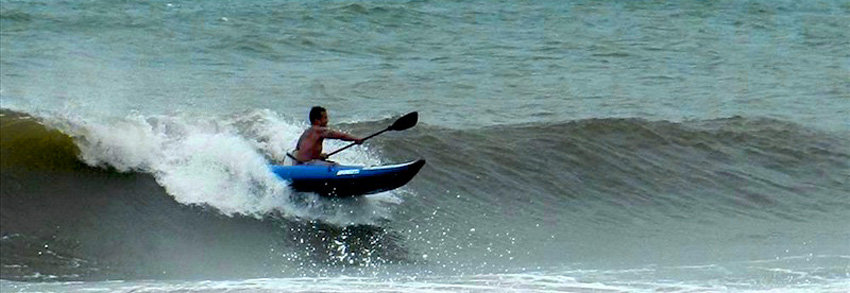
It is probably one of the best inflatable kayaks on the market in 2024. Rated for even class IV rapids, it is as tough as they come.
It is spacious and has a high weight limit for longer seaside trips, has 16 drain valves for surfing ocean waves, and has a drop-stitch hard floor for rigidity and comfort.
I wrote a more detailed review of the Sea Eagle Explorer, read it to find out the good and the bad with this kayak.
SE 380x specifications:
| SE 380x | SE 420x | |
| Weight | 40 lbs. (18 kg) | 44 lbs. (20 kg) |
| Size | 12’6″ x 3’3″ | 14′ x 3’3″ |
| Capacity | 3 people – 750 lbs (340 kg) | 3 people – 855 lbs (388 kg) |
| Air chambers | 2 tubes + 1 air floor | 2 tubes + 1 air floor |
| Whitewater rating | Class IV rapids | Class IV rapids |
| Extra features | 1 fin Drop-stitch floor 1000 Denier PVC 16 drain valves 2 seats & paddles | 1 fin Drop-stitch floor 1000 Denier PVC 16 drain valves 2 seats & paddles |
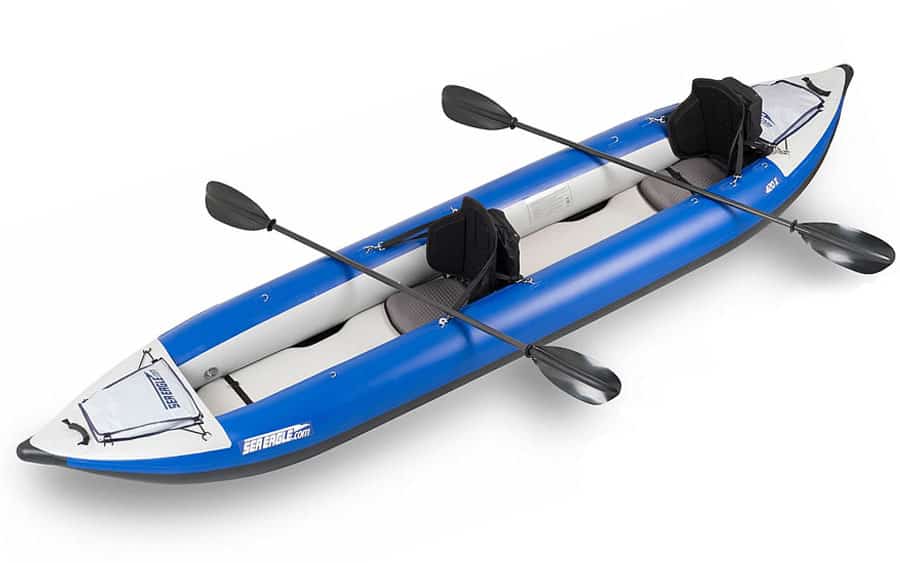
Sea Eagle Explorer

Best ocean/sea kayak
Top Pick!
The Sea Eagle Explorer kayak is more than capable of tackling waves and seashore trips. This is one of my favorite kayaks for its versatility.
Check today’s prices for both versions:
Advanced Elements StraitEdge2 Pro (AE3027-Y)
The StraitEdge2 Pro is a versatile kayak that you can use on coastal and open water. It ticks all of the boxes we’re looking for in a safe, seaworthy inflatable kayak.
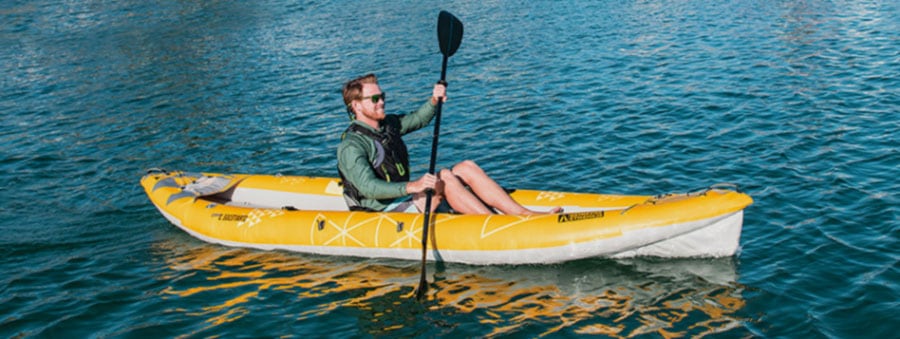
The kayak is 13′ long, which means it will be stable over waves and have enough room for you to pack your gear.
Unlike the Advance Frame line of AE kayaks, this is not a hybrid kayak. Setting it up is easy, you simply unfold it, and inflate it. The side chambers inflate to a respectable 2.25 PSI and the high-pressure floor to a rock-hard 6 PSI.
The StraitEdge2 Pro has 12 self-bailing holes on the bottom that you can open or close depending on the circumstances. This is a whitewater feature of this versatile kayak, but it is also something you’ll need in the ocean for when waves break over your kayak and fill it with water. The water will drain right out through the holes.
By the way, this kayak is rated for Class III rapids, so it can take a beating.
This is a tandem kayak (hence the 2 in its name), so it actually comes with 2 seats. One of the seats even has 2 fishing rod holders.
These thickly padded seats are very comfortable, which is important on high-PSI floors. The padding also means that you won’t be sitting in any water that enters the cabin. The seats also have inflatable lumbar support to make them more comfortable.
The V-shaped hull is made of aluminum and is built into the bow (front). It helps slice through the waves, which is very practical out on open water.
The specially shaped hull and the 9″ tracking fin provide great tracking. Paddling the StraitEdge2 Pro is very easy, even in choppy waters. The adjustable foot-pegs are a nice feature as well, they help you connect with the boat and make paddling easier.
| Weight | 41 lbs (18.6 kg) |
| Size | 13′ x 35″ |
| Capacity | 2 people – 500 lbs (227 kg) |
| Air chambers | 2 tubes + 1 air floor |
| Whitewater rating | Class III |
| Extra features | 1 fin Drop-stitch floor 1000 denier PVC 12 drain valves 2 seats |
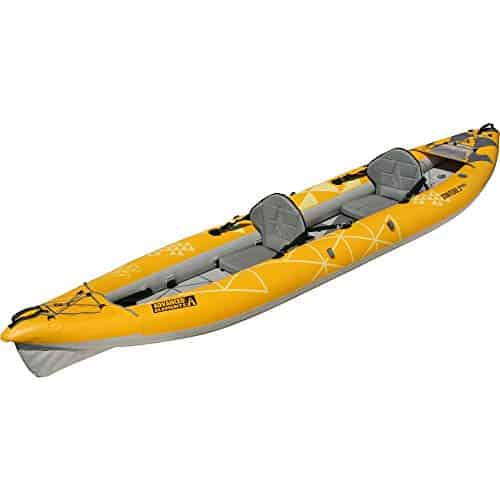
Advanced Elements StraitEdge2 Pro

Great ocean/sea kayak
Also great!
The StraitEdge2 Pro is another versatile, high-quality kayak that has proven to be seaworthy. I love how easy it is to paddle and the built-in V-hull. It does not come with a pump or paddles though, so make sure you get them separately.
It sells out quickly, check today’s prices for availability:
Saturn 14′ Ocean Inflatable Kayak (OK420)
As its name implies, the 14′ Saturn Ocean Kayak is ideal when going surfing in the ocean. I tried it in the waves of the Atlantic Ocean in Florida, and it was a lot of fun.
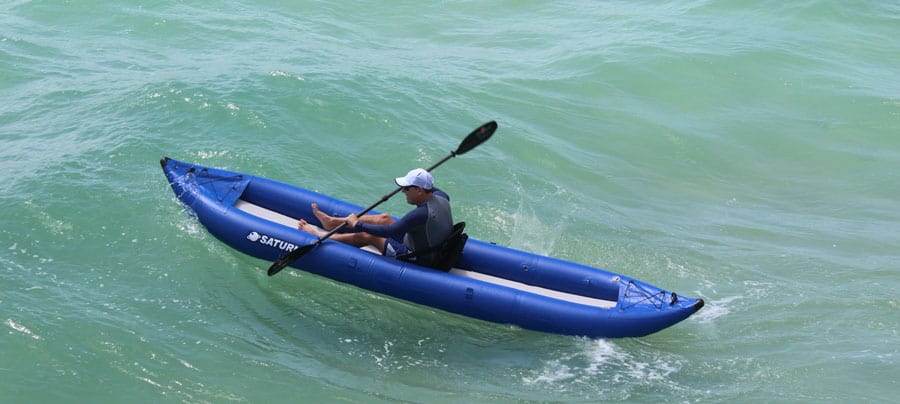
The kayak is nice and long at 14′, so it performs well in waves and has room to carry things. It has 4 drain valves to allow the water to escape, in case the waves splash onto the deck. All Saturn inflatables are made of 1100 Dtex PVC, so punctures are highly unlikely. Its air floor inflates to 8 PSI, so it will be as hard as they come.
This is a tandem kayak, so it can fit 2 seats. One thing to note is that the base package only includes a carry bag, repair kit, and hand pump. It oddly doesn’t include any seats, you need to buy them as extras for about $40 each.
For being such a long boat, it tracked well. It has removable 2 tracking fins, one in the back and one in the front. It goes nice and straight, not wiggly at all. Just don’t forget about it when you head for the shore, you don’t want to bang the front fin into anything.
| Weight | 34 lbs (15 kg) |
| Size | 13.8′ x 38″ |
| Capacity | 3 people – 900 lbs (400 kg) |
| Air chambers | 2 tubes + 1 air floor |
| Whitewater rating | not for whitewater |
| Extra features | 2 fins Drop-stitch floor 1100 Dtex PVC 4 drain valves |
ITIWIT X100+ Inflatable Kayak
The Itwit X100+ is a product of the sporting goods store Decathlon. You may not expect much when you hear that, but this is still a solid kayak you can use on the ocean and sea.
I used it in Croatia for a coastal trip, and it was very comfortable for the 3 hours of paddling I did in it. The seat provided good back support, so I didn’t feel tired at all. The kayak was very stable, as most inflatable kayaks of this width are. I tried hard, but could not capsize it from inside the kayak by moving left and right with all my strength.
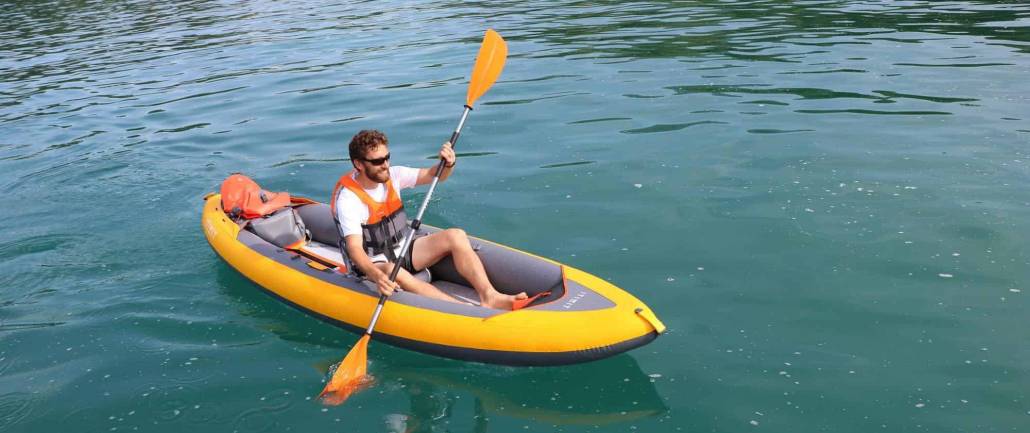
The air floor inflates to 5 PSI, making the kayak rigid over waves. The tubes inflate to a rock hard 3 PSI, which is rather high for main side tubes.
It is also worth mentioning that the x100+ kayak has 3 removable skegs to help with tracking. There are 2 skegs in the back, and 1 in the front.
The package includes the kayak, a repair kit, 2 seats, and a carry bag as well. A nice feature is that its carrying case is actually a backpack, so you can hike with it on shorter distances. The pump and paddles are NOT included, so make sure you get them separately if you choose this kayak.
The only negative about this kayak is that it has very low capacity. At 150 kg, it would be difficult to have 2 adult males paddling in tandem. It also makes me think the material might not hold up so well under excessive stress.
| Weight | 35 lbs. (16 kg) |
| Size | 12′ x 3’4″ |
| Capacity | 2 people – 330 lbs (150 kg) |
| Air chambers | 2 tubes + 1 air floor |
| Whitewater rating | not for whitewater |
| Extra features | 3 fins (1 front, 2 rear) Drop-stitch floor 3 drain valves |
There is a 3-person version of the X100+ kayak, which has a capacity of 245 kg.
Tips for safe ocean kayaking
Ocean kayaking isn’t an extreme sport, but it does have a few intricacies. Especially when you encounter larger ocean waves. Venturing out onto the ocean means that you are an experienced kayaker. Beginners will find ocean paddling very challenging, and it might even become unsafe.
Know this: you will dump 1x or 2x every session. It is best to be prepared for this and already know how to reenter your kayak. This requires practice in calm water.
You should definitely:
- Have a paddle leash, so you don’t lose your paddle
- Be tied to your boat somehow, possibly with an extra paddle leash.
- If you are going into larger waves, wear a whitewater PFD
- Get a set of thigh straps to lock yourself into the boat preventing unnecessary dumps.
- Stay close to shore.
- Mind the tides, as they can change the shoreline.
- Currents in the ocean and sea can become problematic. Mind the tidal areas, where rip currents can develop. A rip current is when water is pushed out by the waves, then pulled back in by the force of gravity.
Safety gear for ocean kayaking
Depending on where you will kayak, what the weather conditions are like, and how long you plan on paddling, you should consider taking some safety gear with you.
- A reliable life jacket that fits you snugly is a must.
- Map and GPS.
- A whistle, you never know when you want to blow one. Especially when another boat is about to hit you…
- Extra paddle in case you lose yours or it breaks.
- Paddle leash, so you only need to worry about yourself if you capsize.
- Self-rescue devices
- If you will paddle in remote locations, you should have a radio as well.
- Foghorn (to make sure you can be heard if you are not seen)

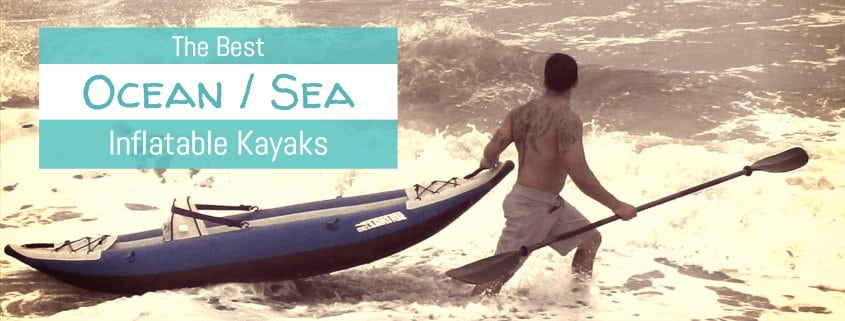
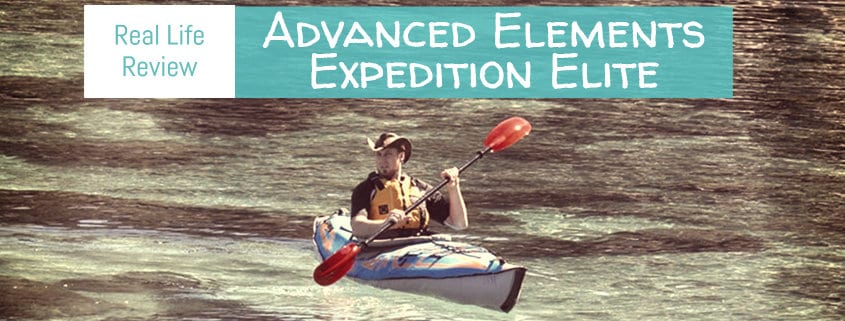
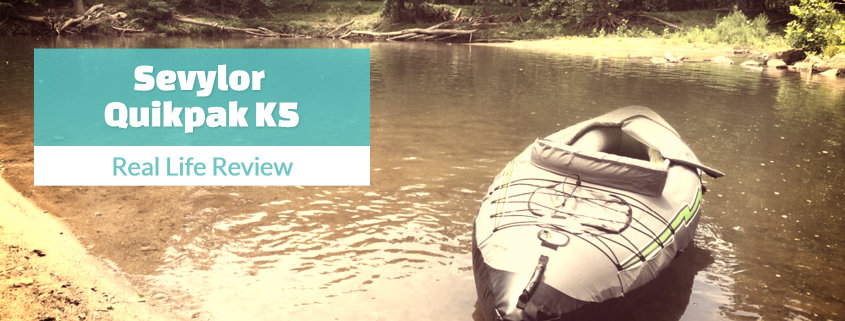
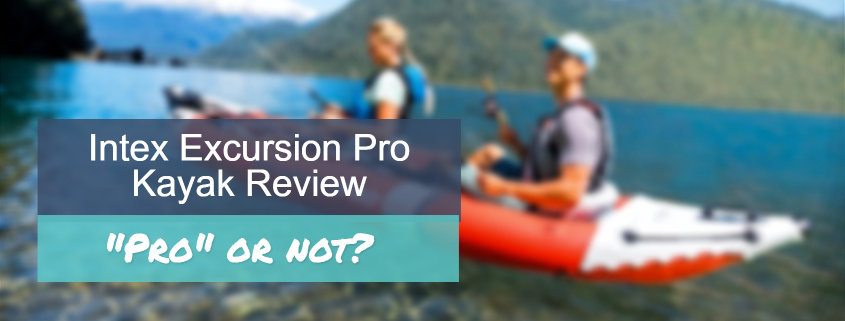
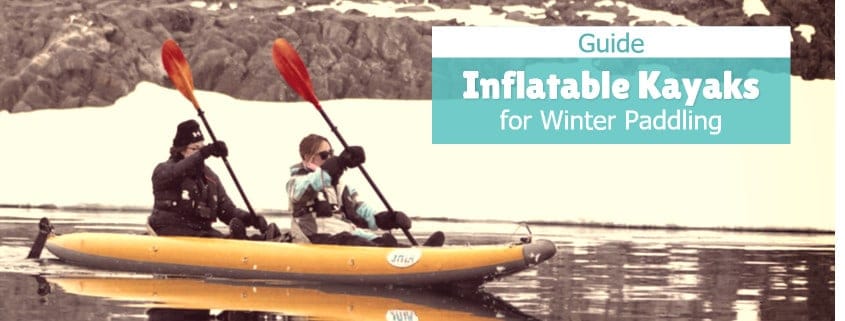
Hello Tom,
Thanks for the article.
I live in an island so i would like to buy a kayak available for ocean.
Would you preffer AE Straightedge 2 pro or maybe sea Eagle fasttrack or any other model you have in your head that works acceptable with waves?
I’m having real issues to decide :(. Thanks a lot.
Hi Sam, any kayak from this article is good, and so is the SE FastTrack. My preference would be a Sea Eagle Explorer 380x, or a FastTrack though.
How much better does the ae straitedge2 track than the sea eagle 380 if at all? I cant decide between those two.
I prefer the Sea Eagle, it is more versatile.
Hi Tom,
We have just bought a Sea Eagle SE473 Razor Lite Pro Kayak. We are novices and have so far stuck to tidal rivers and canals here in Devon. We did take it out for a cautious paddle around a sheltered bay in South Devon with an onshore wind today. It was fun but definitely a learning curve.
Is this model perhaps not really suitable for easy sea conditions? It is long, rigid and stable but doesn’t have self bailing. Planning to remain super cautious, but interested in your thoughts on taking this kayak into the sea.
Thanks Anna
Hi Anna, the Razorlite is awesome, but it isn’t really for the sea due to the lack of scupper holes and narrow width which leads to less primary stability than the wider kayaks on this list. It is not as stable when conditions become choppy. But if you plan your trip well and look at the weather reports, you should be fine. You’ll probably want to take a bilge pump if you venture out, in case you get waves crashing in and water fills the kayak.
Hi Tom, I’m considering of buying a intiwit x100+ 3 seaters kayak. I’m planning to have day tours for both beaches and open waters. My concern is the integrity of the “skin”, will it puncher easily by rocks and sharp objects from the shores.
Hi Rick, the X100 series has thick skin, it’s not an Intex boat. But it’s not a high-end kayak either.
I think if you take care of it, it’ll be ok. Rocks won’t puncture it. Sharp cliffs in the sea, well, be careful there. I’m sure you’ve seen the videos of the beating a Sea Eagle 380x can take. The X100 is not that kayak.
I’m actually thinking of getting the ITIWIT X100+ Inflatable Kayak but there is a 3 man version rated about 245kg max capacity.
I should be doing mostly solo but occasionally i think a friend might join me thats why I’m aiming for the 3 man version…
Is it going to be difficult to paddle solo on a 3 man kayak weighing about 18kg and 410cm long?
I have an article on where to sit in tandem kayaks if you’re paddling solo. The 3-person version shouldn’t be much different than a 2-person one.
Hi Tom,
Thanks for the great article. All the kayaks you recommend are for two people. Do you have a recommendation for a 1 person ocean inflatable kayak?
Thanks!
Hi Rebecca, the Sea Eagle Explorer has a 1 person version, called 300x, here it is. It’s about 3 feet shorter than the 2 person 380x.
You can compare the various SE Explorer models on this page.